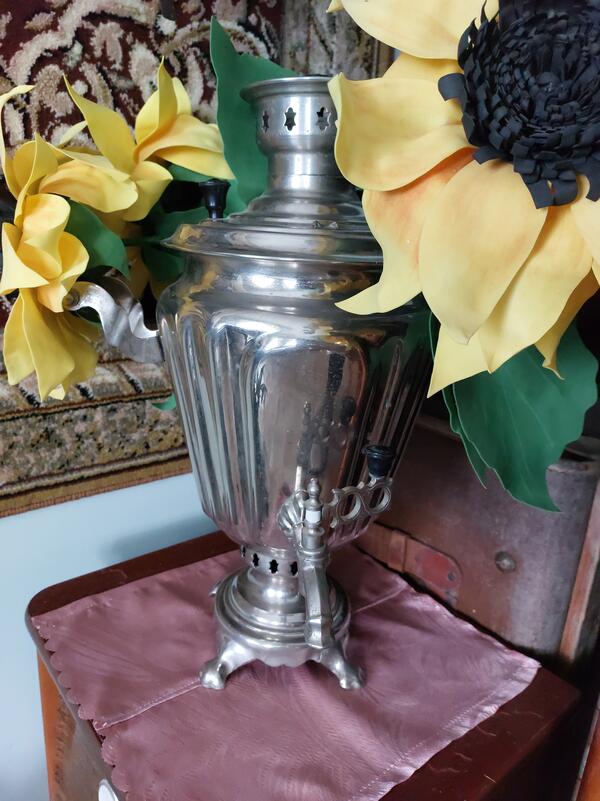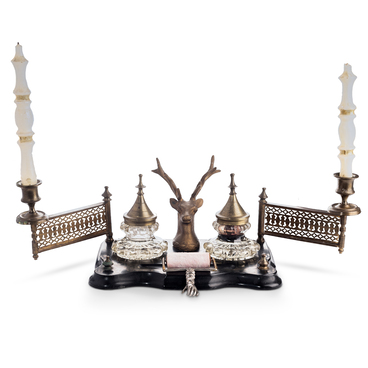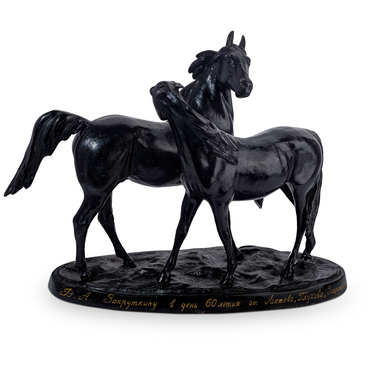The samovar was purchased by Vitaly Zakrutkin in Rostov-on-Don in the 1960s.
Vitaly Zakrutkin was known for his warm hospitality and generosity. When building his house, he dedicated part of the space for guest rooms. The writer’s front-line comrades, fellow authors, aspiring writers, and relatives frequently visited his spacious home in Kochetovskaya. Every summer, his brothers with their families, sister, and nephews would come and stay for extended periods. To comfortably accommodate his relatives, Vitaly Zakrutkin arranged summer cottages on the garden grounds.
In the evenings, guests gathered in various corners of the Zakrutkin estate to gaze up at the stars. Vitaly Zakrutkin, who had developed a keen interest in astronomy from his father, shared his knowledge and insights with them.
In the mornings, the host welcomed his guests to the gazebo, where a large silver samovar already stood in the center, filling the air with the aroma of smoke. The Zakrutkins’ samovar was not electric, but rather wood-burning. Special fuel was prepared for it, consisting of chips from dry twigs of cherry, apple, pear, quince, and other fruit trees. These branches were pruned each winter, dried, and then sawn into small pieces. It was this meticulous preparation that imbued the smoke with its distinctive scent.
Vitaly Zakrutkin had two brothers, Rostislav and Yevgeny, and a sister, Angelina. They, along with their other relatives, frequently visited Kochetovskaya to see their brother and parents who lived there. Celebrities and local musicians would gather near the samovar, and Mikhail Sholokhov was a frequent guest. Sholokhov enjoyed listening to the Kochetovskaya Cossacks sing. He was warmly welcomed, and many villagers tried to impress the famous writer by preparing large pies, fruit dumplings, and other delicious dishes for him.
The poets Nikolay Dorizo, Anatoly Sofronov, Yury Remesnik and Boris Kulikov also visited Kochetovskaya. Like other guests, they gathered around the samovar and held readings.
The first samovars appeared in the late 1730s in the Ural region. In Tula, which later became known as the “samovar capital” of Russia, samovar production began in 1778.
The design of the wood-burning samovar, which uses
wood as fuel, was established early in its production and has remained largely
unchanged to this day. The only variations over time have been in the artistic
design of its components.


